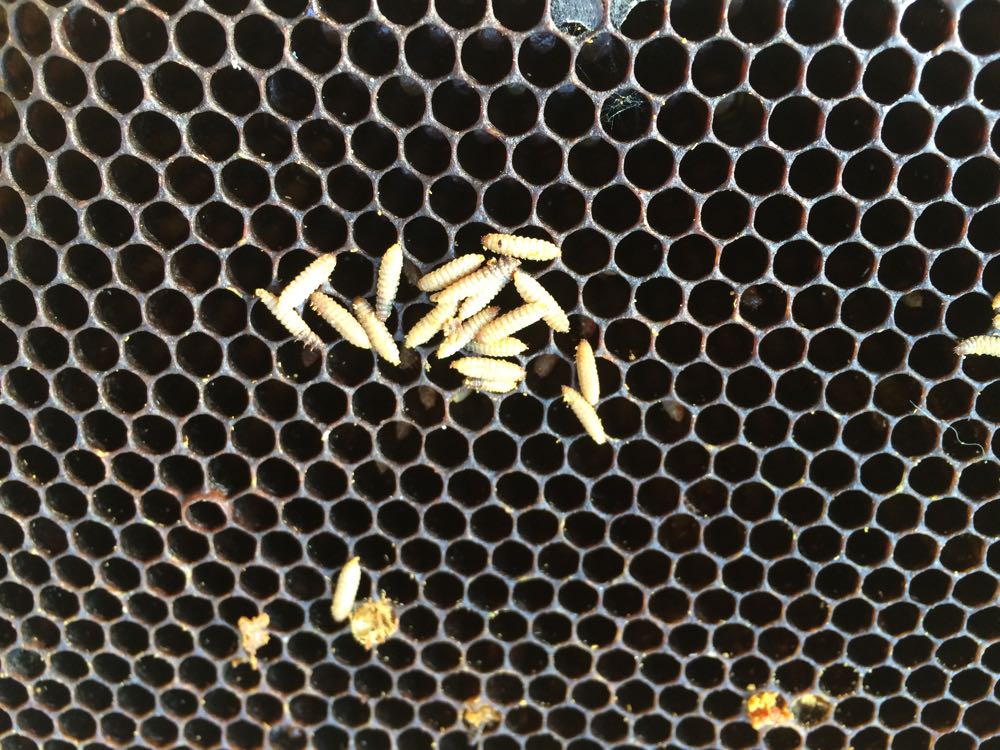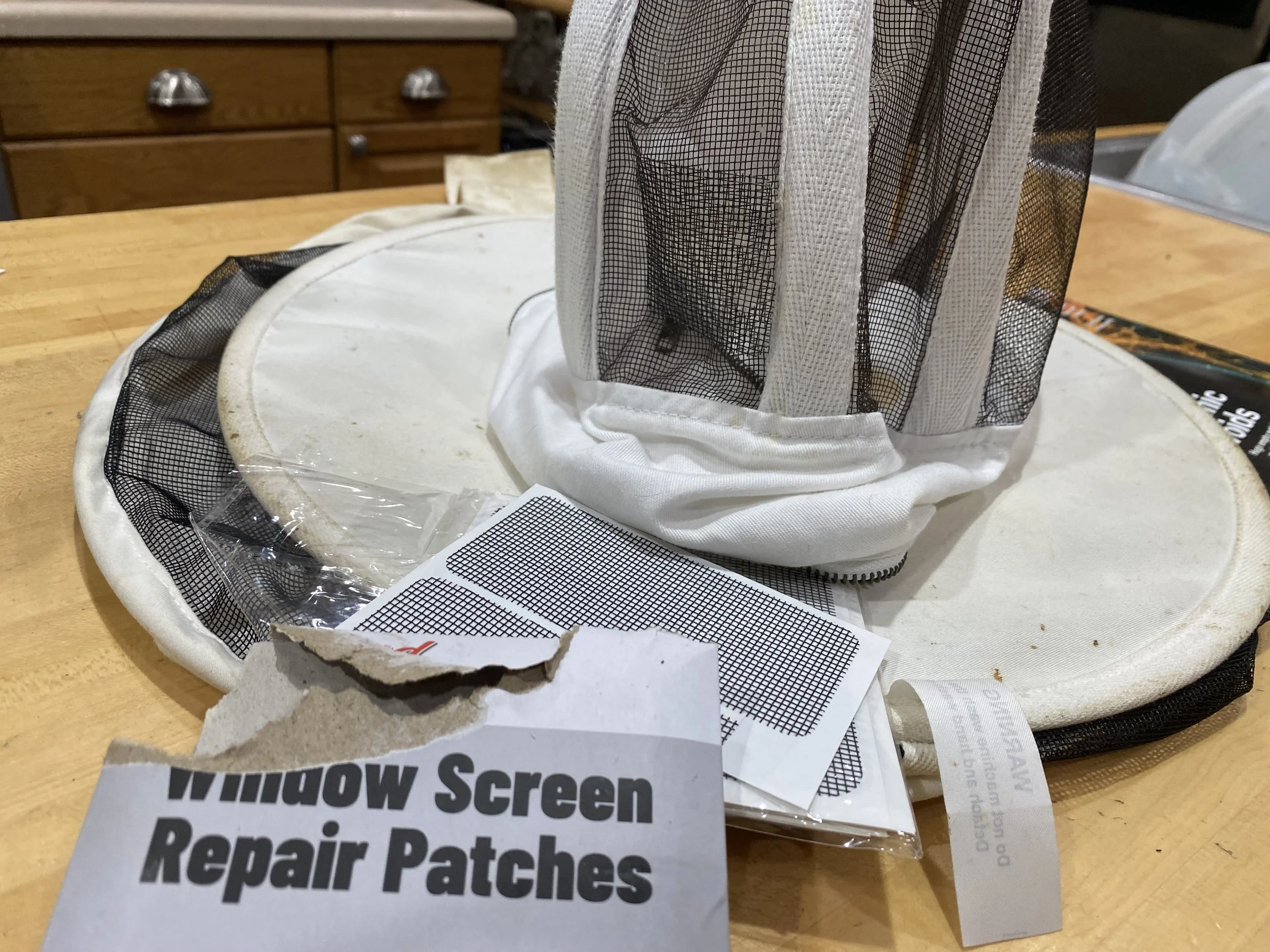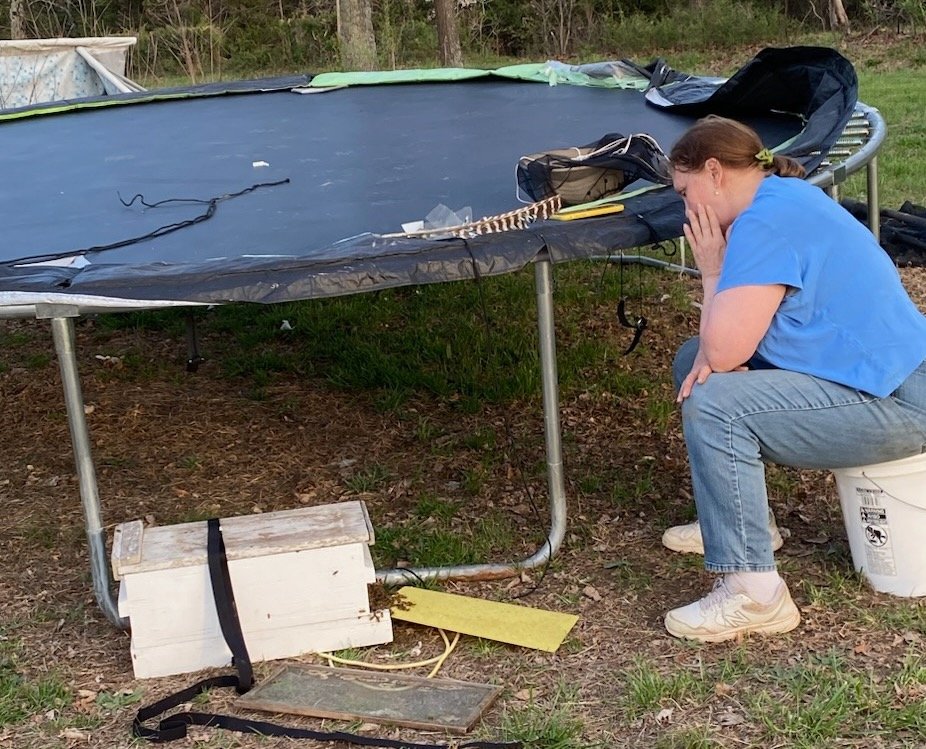How to Save Remaining Hive from Small Hive Beetles
/Frozen frame of wax brings out small hive beetles.
"My 2nd year in buzzing and the small hive beetle has wiped out 3 of my 4 hives, please help!" -- Wayne
Charlotte: I am SO sorry, small hive beetles can be devastating. These invasives are originally from sub-Sahara Africa and seem to be thriving this year in mid-Missouri in our record hot summer temperatures. What do you have left in the remaining hive?
Things to Have on Hand as You Inspect
Plastic garbage bags; newspapers or dark sheet; plastic gloves; extra super or nuc box; phone to photograph frames for future reference; small hive beetle traps and mineral oil or swiffer cloths; access to another hive for brood and stores.
If you have plastic gloves from hair products, use those. Gardening gloves may be more flexible than your leather beekeeping gloves.
If you don't have them in your beekeeping arsenal, plan on buying a box of plastic surgery gloves from Dollar stores. They come in handy when you need more finger dexterity.
Distinct Hive Smell
Whenever you inspect your colonies, the first thing you should always check is the smell of your hive. Does it smell clean or, better yet, like honey?
When looking for small hive beetles, when you open the lid, does it smell like dirty socks? If so, you have small hive beetle larvae in and sliming your frames. They need to be removed as quickly as you can.
Unlike wax moths, which take over a weak hive, small hive beetles can take over a strong hive within days.
Preparing to Inspect Colony for Small Hive Beetles
First, cover the ground around your hive with cardboard, newspaper, a dark sheet - you want to prevent small hive beetle larvae from falling off frames into soil to pulpate.
Be Prepared to Strike Quickly
Once you have the area around your hive covered, remove your leather gloves and pull on the plastic ones. If you have gentle bees, these gloves will work. The gloves will give you more flexibility as you go after small hive beetles to kill them.
Open your hive back up and be prepared to quickly kill every small black bug you see. They gravitate to dark areas, such as under the telescoping cover, so be prepared to strike as soon as you lift off the cover. Use your hive tool, your gloved hand, whatever is handy and don't be merciful, you need to kill every small hive beetle you come across.
If you are feeding, also check under your feeder, they also like to congregate there.
I also tend to find small hive beetles themselves in end frames so remove the second frame from the outside, inspect, then be prepared to quickly kill small hive beetles quickly moving around those end frames.
Safeguard Your Queen
Now that you have a little room to move around the hive, find your queen and set her in a nuc or a super box so she's safe while you inspect the rest of your frames.
Small hive beetles like dark comb to lay eggs. Larvae will crawl out when exposed to sun. This is a frame of brood that had to be frozen to kill small hive beetle larvae.
Checking for Small Hive Beetle Larvae
Most people watch only for the black, ladybug-like bugs but those are the ones laying larvae eggs so you need to be merciless looking for, and removing, the larvae.
As you pull out a frame, hold it up to the sun and wait a few seconds. Small hive beetle larvae will start to crawl around outside the wax comb because they don't like the sun exposure.
If they don't start to show up as you expose the frame to sun, take your hive tool and gently slide the comb aside and see if a bunch of little white worms emerge, that's the larvae. And whatever you do, keep them away from soil. If you happen to drop a few, literally stomp on them and grind them to death or you will just have more small hive beetles next year.
Gently remove bees, then wrap each frame individually in plastic and place in a container with a bottom to prevent small hive beetle larvae from getting away, and check the next frame.
You can stack frames inside a large garbage bag to store before freezing, the frames will help keep comb from globbing together but make sure there is no wax touching to give small hive beetle larvae a place to hide.
Even if you end up with just a couple frames of brood and a queen, you can start again.
If you have no frames un-infested, borrow a frame of brood and stores from another hive, add the queen and treat the colony as a new start.
Small hive beetle-infested frames in my refrigerator freezer in garbage bag.
Freeze Small Hive Beetle-Infested Frames
What to do with those plastic-wrapped, small hive beetle-infested frames? Freeze frames for 2-3 days. I have a top freezer in my refrigerator. Six deep frames will fit at once, or 12 medium frames.
Don't forget to tell your family members what's in the freezer.
Working with Remaining Live Frames
Keep the remaining frames in a nuc and close the entrance to one bee width so small hive beetles can't fly in. You also need to help protect the little colony from robbers.
Add small hive beetle trap filled 1/3 with mineral oil to opposite corners of the hive body, even if in a nuc.
If you don't have traps, cut a Swiffer duster cloth into 3 inch x 3 inch strips, roll and place between hive corners diagonal to each other. A few bees will get caught in the cloth but more small hive beetles will stick there and die.
Inspect Daily
No, it's not over, now you have to diligently inspect daily. Twice a day if you are a worry wart like me. If you see small hive beetle larvae on some frames to start, chances are you have them in all frames, they just haven't hatched yet.
As you find yet more frames with small hive beetle larvae, remove and replace with frames from another one of your colonies. This is why we recommend starting with two hives, if one is struggling then you can borrow from the other. Don't forget to inspect your other colony or colonies, small hive beetles can fly up to 7 miles in one flight.
What To Do With Frozen Frames
Once larvae has been killed through freezing, frames can be reused in most cases. I tend to clean off the frames of the old dark comb but other beekeepers I know use them as is, it's your call and what your bees will use.
Frames of honey infested with small hive beetle larvae have been slimed so if you plan to harvest, wash off first, then let dry to make sure you have removed the slime.
I also wash off any honey frames of slime before giving back to bees.
Signs of wax moths include white filament channels in wax comb and on frames.
Small Hive Beetles or Wax Moths
Signs of wax moths are distinctly different than small hive beetles. When inspecting your frames, look for roads of white filament through the comb. That's where the wax moth eggs have been laid and where you will find the larvae.
Find a Local Mentor
Where are you located? There are 38 bee clubs in Missouri, find one close to where you live and hopefully find a mentor to help you.
Charlotte















